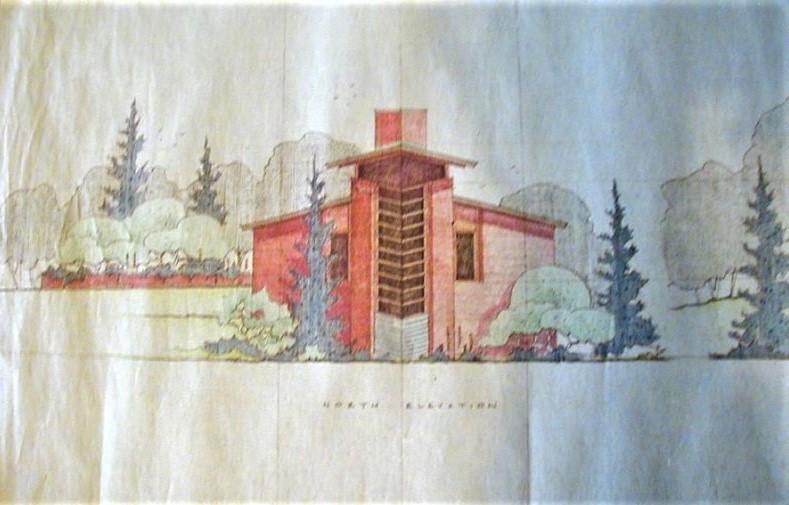In search of an architect, the building committee of the newly-formed congregation of Eastminster Presbyterian Church in East Lansing, Michigan, sent out a request for proposals in April of 1958. Alden B. Dow responded by enclosing sketches of two other churches he had designed and described the qualifications of his firm by stating in part:
“Our office employs twenty-six persons engaged in architectural work. Nine of these are registered architects or engineers. We do approximately six to eight million dollars worth of work per year; however, most of our pride is reserved for the church buildings we do. Somehow these seem to take the very best out of every one of us. We approach our work with honesty, humility and enthusiasm and believe these qualities are evidenced in the finished product.”
The committee selected Mr. Dow as the architect and a period of fundraising by church members ensued. Due to financial constraints, he was asked to prepare a master plan for the church to be built in three phases. The first sketch in August 1959 showed a dramatic diamond-shaped sanctuary to the east and a smaller chapel based on a similar geometric grid to the west, with both modules connected by a corridor of offices whose walls were angled to match the overall grid.
The drawings for phase one were completed in May 1960. The design was scaled down to a hexagonal floorplan, with chancel and pulpit angled to the east, nave in the center, and the entrance, narthex, and stairway to the lower level to the west. The lower level was devoted to classroom space, offices, and kitchen.
Haussman Construction Company of Lansing was chosen as the general contractor. After a series of deductions, the initial proposal of $173,978 was reduced to $148,305. Construction commenced on June 17, 1960. The brick exterior is topped by a low sloped roof and features large windows separated by triangular brick piers on the north and south sides. On the north side, the lower level is revealed with the windows on both levels separated by white stucco spandrels. Exposed brick walls continue on the interior; the statement piece is the chancel window, which consists of blue plastic strips laminated between plywood panels with 6 inch and 12 inch diamond-shaped openings in a vertical alignment.
The church was dedicated on January 22, 1961. The congregation grew in number and began planning for phase two of the plan by 1967. Although Mr. Dow was one of several architects interviewed for the job, economic considerations tipped the building committee’s vote narrowly in favor of the local firm of Manson, Jackson & Kane. In its design, Manson neatly integrated a larger hexagonal-shaped sanctuary into the northeast side of the main body of the church and utilized the same exterior materials, all in keeping with Mr. Dow’s desire for composed order. Phase three was never built.
Color drawings and photographs courtesy Eastminster Presbyterian Church.









